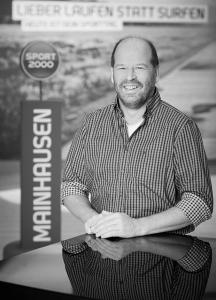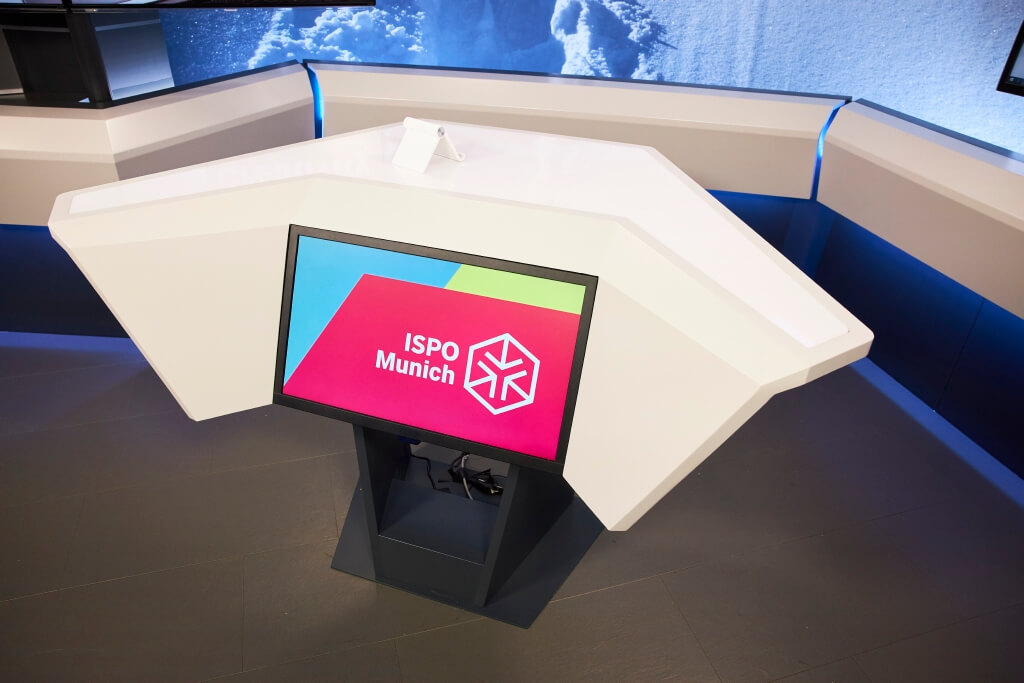For five days, the focus of the first digital ISPO was set on the challenges posed by COVID-19 and their effects on sports retail. In addition to new developments such as the greater importance of sports in almost every age and demographic group, the megatrends in the industry continue to include sustainability, digitalisation, and sports technology. Cancelled sports events, closed gyms or the retail trade marked by numerous lockdowns – the pandemic has affected the sports industry at all levels. This requires all stakeholders in the market to be flexible.

Niko Schulz, Category Manager Running, Training, Lifestyle, Teamsport/Apparel
#1 Holistic training instead of the push for top performance
The pandemic has once again directed people’s attention to health. Staying physically fit through sports is vital for people of all ages. Here, the push for top performance is receding ever further into the background. The focus is on a holistic training approach that promotes vitality and well-being. Athletes are increasingly engaging in a mixture of strength, cardio, and mental training. “Combining the mind and body – also known as mindfulness – is a trend that has been gaining in importance for around two years. Yoga is one of the prime examples of this. The extraordinary situation at present has given this trend further momentum,” emphasizes Niko Schulz, Category Manager Running, Training, Lifestyle and Teamsport/Apparel at SPORT 2000 International. The trend towards more individuality is not only limited to the form of movement, but is also reflected in the training clothing, explains Niko Schulz: “The so-called ‘body mapping’ is increasingly influencing the design of sportswear. The cuts are optimally tailored to the different body shapes and take body areas into account that sweat more or less. In this way they create ultimate comfort and performance.”

André Navratil, Category Manager Running, Training, Lifestyle, Teamsport/ Equipment & Footwear
#2 Home gym – professional equipment now in demand
This development is confirmed by the above-average sales of fitness equipment for home gyms. “All forms of gyms have been closed for months, and many people have responded to this situation by setting up or expanding their personal home gym. This ranges from buying dumbbells to a treadmill or strength station” comments André Navratil, Category Manager for Running, Training, Lifestyle and Teamsport/Equipment and Footwear. “Here, the trend is towards training equipment with digital features. Even though individualisation is becoming more and more important, people wish to be connected with a community – including in the digital world. Many apps and platforms provide motivation and allow interaction with other like-minded people.”
#3 Running – the ideal way to get into sports
Besides cycling, running is considered one of the biggest winners of the coronavirus pandemic. “Running gained many new fans last year, since people can practise the sport whenever and wherever they wish. Above all, people of any age who are beginning or returning to sport have rediscovered the joy of this form of exercise in the fresh air,” explains André Navratil. “Regardless of what level the runner is at, it is essential to balance the degree of stabilisation and shock absorption in the running shoes. Specialised retailers offer analysis tools for finding the right running shoes.” André Navratil particularly recommends beginners or those returning to the sport to seek good consultation when purchasing footwear; with many specialist retailers, this is also possible online. The goal is to find footwear that fits well and is ideally adjusted to the level of performance.

Verena Schledorn, Senior Category Manager Outdoor & Wintersport/Apparel
#4 Female Perspective – focus on women
When it comes to product innovations, the focus is increasingly on the needs of female athletes, after all, the female body makes special demands on sports clothing. One example of this is the ISPO Brandnew 2021 Award winner Veloine. The cycling specialist produces cycling clothing especially for women and has now created cycling shorts that easily adapt to the growing belly of pregnant women. “Brands have understood that it is not enough to just change the size and color of sportswear to appeal to the female target group. Models that are individually adapted to the female body are required in order to support female athletes in their performance as best as possible,” says Category Manager for Outdoor & Winter Sports / Textiles Verena Schledorn.

Steffen Kunz, Senior Category Manager Outdoor
Footwear & Equipment
#5 Outdoor continues to focus on sustainability
Both the summer and winter months draw active people to the mountains. From hikes and climbs to ski tours at altitude, the range of sporting possibilities in the great outdoors is varied. This is also reflected in the equipment required. “In the outdoor segment, too, an ideally fitting shoe is crucial and should be bought with the help of professional advice. The shoe trend in this segment is light and multifunctional at the moment, but a long service life and the possibility of resoling are also becoming more important,” explains SPORT 2000 International Category Manager Outdoor Steffen Kunz. The issue of sustainability is increasingly being questioned by customers, especially in the outdoor segment. “The trend is moving towards complete transparency along the entire textile chain – from development and manufacturing to recycling. In the case of materials of the new generation, the focus is primarily on the ability to decompose into natural components on their own – also known as ‘Close the Loop’. Nevertheless, it is expected that sports textiles will not lose their functionality and design”, says Steffen Kunz and goes one step further: “In addition, the focus is not always only on the sustainable production of products, but also on versatility in everyday and recreational use.”
Credits: ISPO Munich Online




